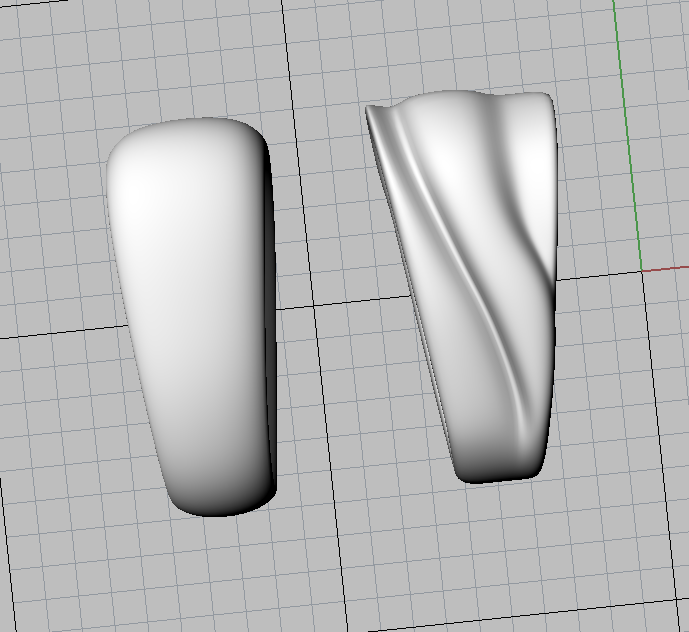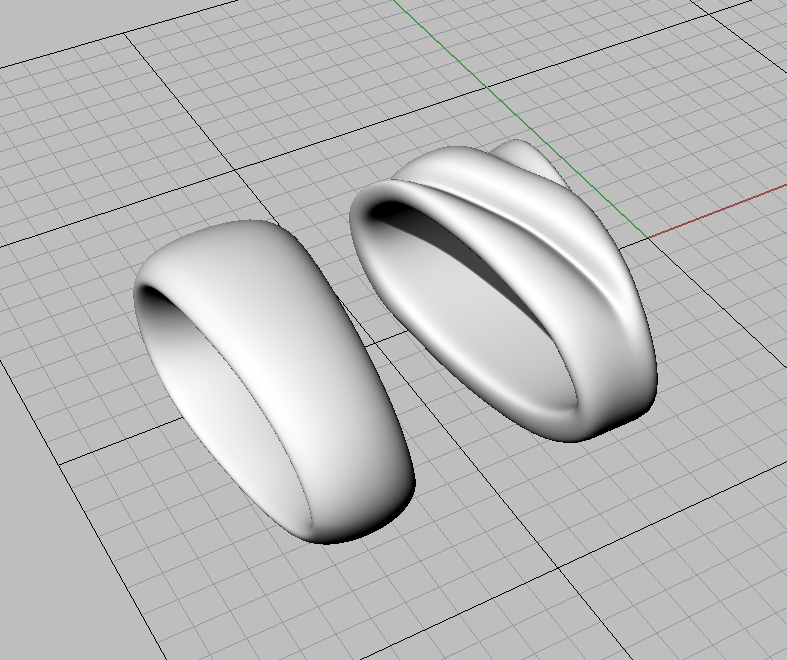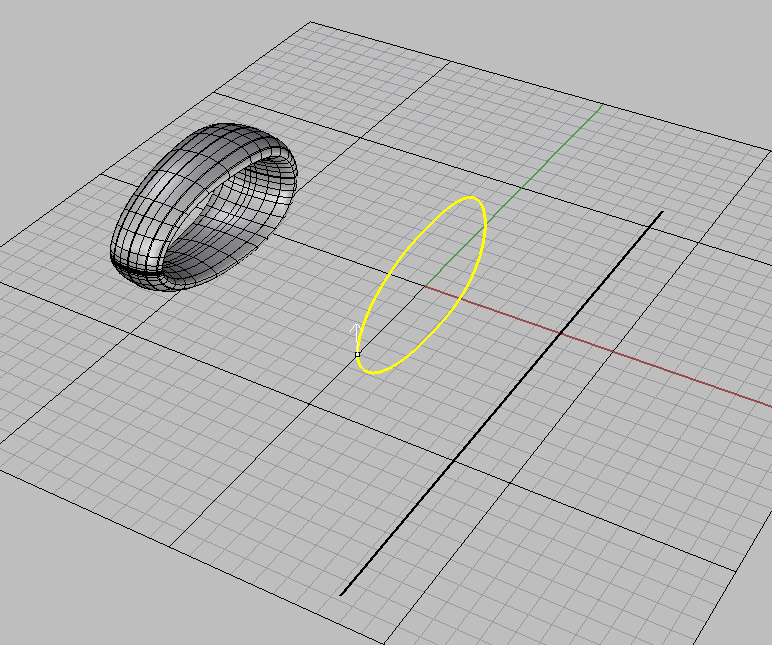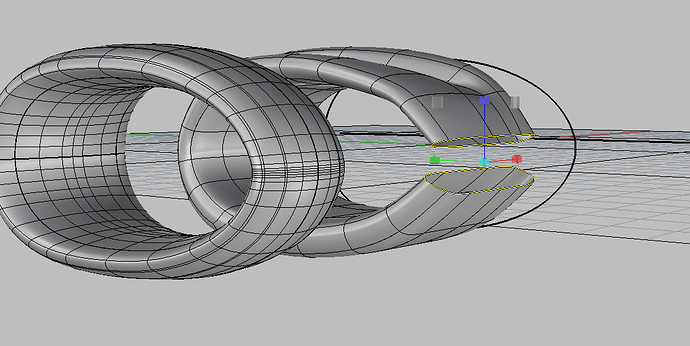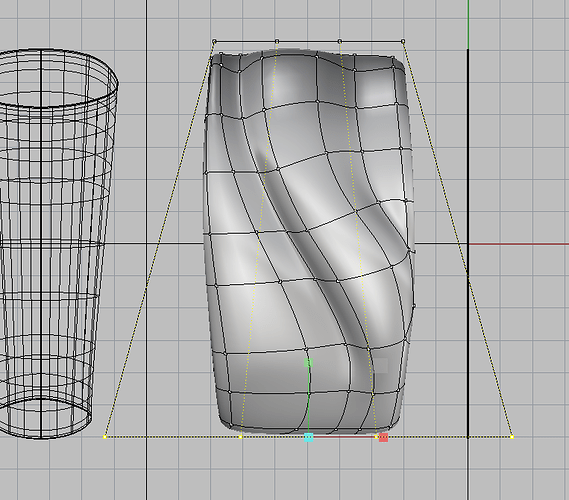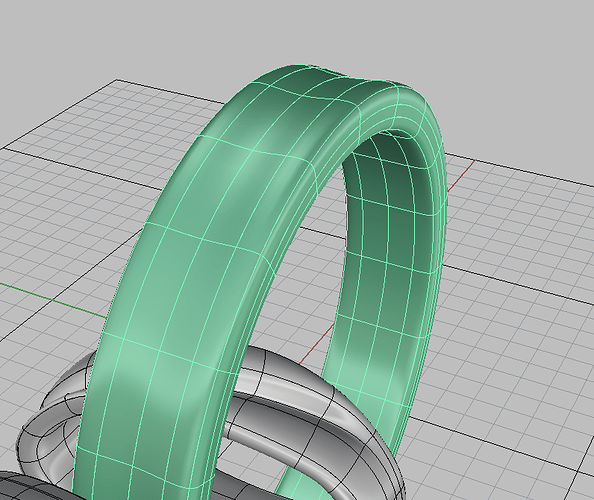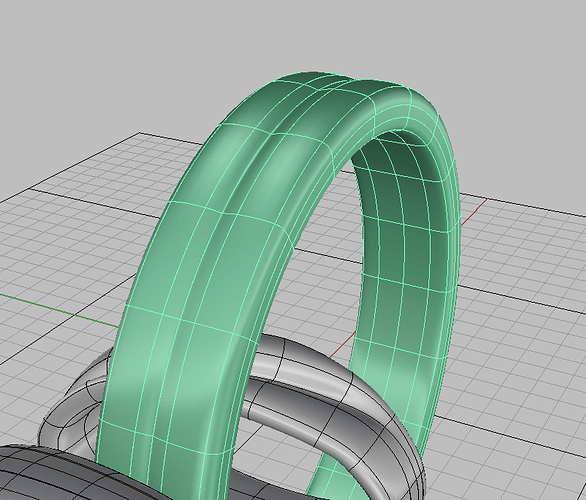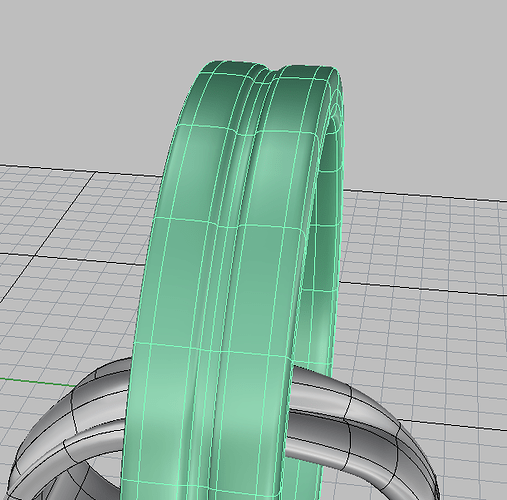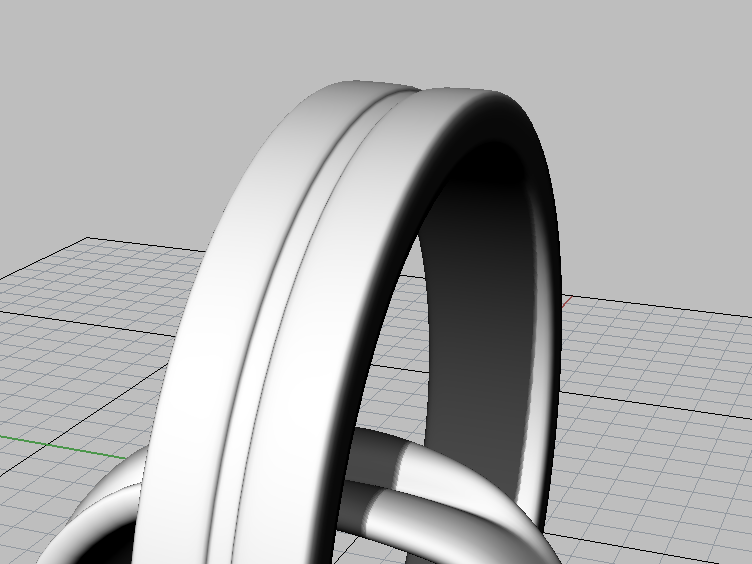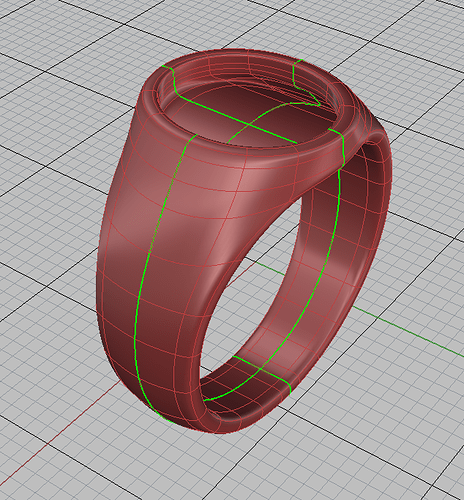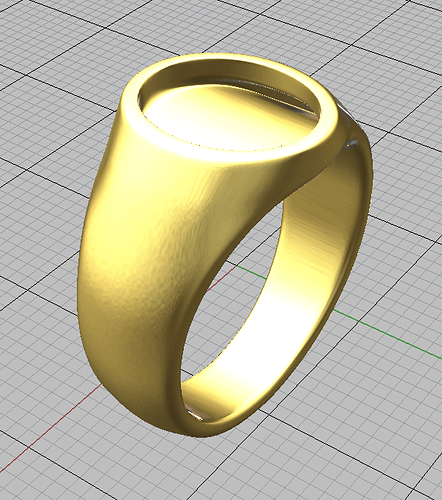Hi,
Maybe someone is willing to take the time to help me learn how to create flutes like in the picture that I hand made onbale export.3dm (307.2 KB)
on a bale made in Rhino .Thanks so much
I’ve just read about Rhino Renderer Development Kit (RDK) for Rhino 4. Could I use this in Rhino 5 to use ExtractDisplacementMapping command to get this kind of fluting. https://wiki.mcneel.com/labs/rendererdevelopmentkit10
One method to create semi-circular flutes:
Use InterpCrvOnSrf to create centerlines of flutes.
Pipe around the curves to create shapes which will be used to subtract from the bale. Do not start or end the pipe with a diameter of 0. Instead use a small start and end radius and cap the pipe.
BooleanDifference to subtract the pipes from the bale.
Example: bale flutes DC1.3dm (776.1 KB)
Thanks for the help. I’ve tried that. I need the shape to BooleanDifference the other way (sharp crease inward, and the rounded like a half circle or oval at the center of the flute. I would filletedge to soften the crease later to prevent porous castings. Also wrapping the InterpCrvOnSrf around to the underside of the bale nicely seems difficult to do gracefully. Tried to use sweep1 on the InterpCrvOnSrf with a v-shape but that also did not work out nicely for me. Is there anyway to use UnrollSrf or squish here. Tempted to try Heightfield here, but I have no experience with that command. How would I create a crease if I rebuilt the surface points to a workable number? Would like to accomplish this in Rhino and not resort to T-Spline plugin, where I have even less experience, and want to concentrate on learning Rhino and Grasshopper.
Hi EtRec- instead of InterpCrv, you might, depending on the arrangement, get good results from Project of simple 2d curves with History on, and adjusting the input curves until the projections lie on the surface as you like. I did not see any curves in your file, so I have no idea how you want to arrange your flutes.
-Pascal
Thanks Pascal …Trying that now. Will post some results later. Thanks
For protruding rather than indented flutes use BooleanUnion. Example: bale flutes DC2.3dm (701.4 KB)
UnrollSrf won’t work because the surface is not close to “developable”.
Squish will work to give a flat surface. You will probably want to use SrfSeam to move the surface seam from the outside to the inside before using SrfSeam.
For learning purposes I’d concentrate on learning to make the flutes directly rather than trying advanced techniques like Heightfield.
Didn’t think of that. That might work the way it would look if I carved it out of wax. Thanks
The problem, for me, is that I already have a basic shape and size that I want to encompass the final flutes. I’m trying to figure out a way to to use the bale shape I already have without creating new shapes to try and fit in the bale. Using cage-edit too much seems to create it’s own problems.(to many isocurves etc) I’ve been trying to learn Rhino for over a year now. Just when you think you have some kind of progress in sight, the goal post skedaddles further up the road. This by the way is a relatively common type task in Jewelry.
If you do a lot of this style of jewellery then IMO T-splines/subD is a must skill in conjunction with a sound knowledge of Rhino. I have worked on the jewellery bench for over 30 years and found T-splines really easy to pick up.
For me to make that my first option would be to make it in T-Splines, my second to carve it by hand and a very distant third make it in Rhino. Good learning project however to improve your Rhino skills.
Photos of a quick and dirty sample in t-splines. Good luck.
Hello Sochin,
I was actually hoping you would get back on this. I also sat on the bench for over 30 years. Thanks for the input. Will sit down to do this in wax for now and don’t feel so bad not getting it done today in Rhino, after your comment. Tried it in T-Splines but was having trouble turning around and under the direction of the crease. Will give it a shot in Rhino again when I have more time with a different approach. Want to be able to use the original surface of the bale. Thanks for the input
LOL…I still spend most of my time on the bench. But CAd is now a big part of production. I print and cast all in house.
What you alluded to in your posts above about creases also applies to edges. Whilst a perfect edge might be desirable in other industries those edges cause nightmares in casting for us.
When I first started rhino I spent a lot of time making stuff and then filleting edges. T-Splines just solves the edge problem.
Here is how I made that bail in Rhino/Tsplines and maybe it might make you rethink your disinterest in t-Splines.
I extracted the curve from the centre of your bale, moved the closed curve seam to near the jump ring area and then measured its length and created a straight line the same length.
Now make your shape on the flat in t-splines. Much easier than working on a curve.
The flow command in Rhino works very well with t-splines as do many others. Turn points on for t-splines then flow from the straight curve to the bale curve.

Next use the t-splines bridge command to close the end off into a solid.
Now turn points back on with your t-splines object for a cage edit in Rhino to taper the bale. We want 2 point rows on the plane of the cage we want to taper. Once the cage is formed turn t-splines back to object selection. The cage will not select the tspline object without points on but you can turn them off once created. This make editing the cage much easier and will give you the result you want.
My photos are a bit weird as I am reversing the making and taking the photos. Once the points are off in t-splines the cage edit works perfectly like it would with a nurbs object.
Turn the cage off and now now you can tweak the top of the bale as a t-splines object or flow it back down to the flat if that is easier. Hopefully you can see the potential here. Have fun.
Thank you so much Sochin…I tried to use the crease command in T-Splines without getting the results I wanted today. I’m going to go through this tutorial a few times on Christmas break if my granddaughter doesn’t take up all my time. I know only to well the time I have to take to fillet edges to try and minimize the disintegration in the casting flask adding to porosity. I envy you , having in-house casting and printing. Would love to pick your brain on best practices for converting .3dm to .stl format (the newer printers at my casting house seem to have problems with everything I do. But that’s for another thread. Thank you so much again
I don`t use the crease command ever. The principle for line definition in t-splines is simple. Larger gaps between lines give smoother transitions and the inverse gives you sharper. You can also tweak this in t-splines with the tsWeight command I believe but I only ever played around with that a little.
Study the line structure in this simple t-splines band here. It will hopefully give you an idea.
To give it more definition, sharpen up the outside edge you just add more lines out near the edge and position.
Next the same ring with the addition of a few more loops in the centre and and some scaling… from a crease to what you could turn into a channel for setting.
Also using Symmetry with t-splines is heaven. This is a gents ring I have been working on today with quad symmetry.
T-splines is not the answer to everything but it is a really good tool to use with Rhino for jewellery IMO.
Thank you Sochin…you are very generous with your time. I’m sure others will find your post very useful as well. I’m definitely going to study T-Splines more. Thought I would not spend to much time with it, since I have such a long way to go, learning Rhino and the end of life for T-Splines coming up next year., but I think it was more an excuse to avoid T-Splines because I couldn’t seem to get used to working without the constant measurements of Rhino. Cheers. PS Nice gents ring. I like shape…lots of fiddling in wax without the use symmetry button.
